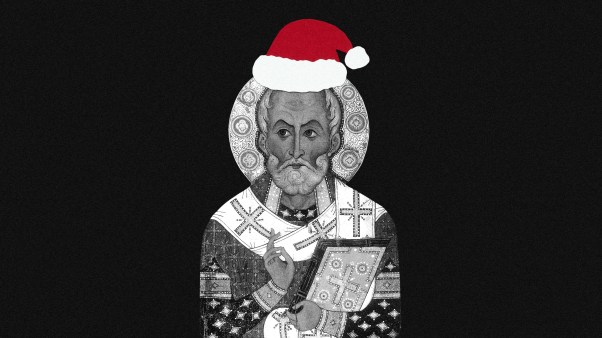Evangelicalism is one of the largest and most dynamic forms of Christianity in the modern world, but there is an amorphous quality to many words that end with the suffix “-ism,” and “evangelicalism” is no exception. “Evangelicalism” does not have the hard and crisp denotation of a concrete noun such as “Jesuit.” This confusion goes back to lexical roots. The English language uses the Anglo-Saxon noun “gospel” for the Greek “evangel” but retains the Greek root for the adjective “evangelical” and the abstract class-noun “evangelicalism.” There was a time when certain Protestants were called Gospellers, but the obvious link between “gospel” and “evangelical” has now been largely obscured. As an abstract noun naming things that cannot be heard, seen, or touched, “evangelicalism” seems always in need of more concrete definition.
Here history helps to clarify the meaning. In common use, “evangelicalism” deals with the doctrines, practices, and history of a class of Protestants that emerged distinctively in the early modern period, endured for three centuries, and spread to five continents. “Evangelical” identified the churches of the Protestant Reformation and their teaching, especially the Lutheran evangelische church, but the origins of modern evangelicalism, as understood in the English-speaking world, are found more in the popular spiritual awakening of the following centuries in the North Atlantic region. Seventeenth-century movements of devotion such as Pietism, Puritanism, and the Anglican “holy living” tradition fused to generate a general spiritual awakening first in central Europe and Germany, then throughout the Anglo-sphere. In the middle third of the eighteenth century a number of persons, who later would be drawn into evangelical preaching, passed through crises of personal conversion. The most famous of these in Britain were John and Charles Wesley and George Whitefield, but there were many others. Most were already baptized, highly observant Christians who nevertheless came to a crisis of conscience and spiritual insufficiency that seemed to demand new and more deeply personal experience of repentance and faith in Christ. They discovered in these conversions new impulses to preach, travel, organize, and campaign for widespread evangelical renewal within their own spheres, whether Anglicans, Methodists, Moravians, Presbyterians, Congregationalists, or Baptists.
The American and Scots-Irish experience of corporate renewal in local communities influenced the emergent sense of a broader transatlantic evangelical awakening. Thus, when preachers witnessed large numbers of men and women experience personal conversion in a short period of time, they typically spoke of a remarkable “work” of God. Jonathan Edwards gave public attention to this phenomenon in a series of books, beginning with his Faithful Narrative of the Surprising Work of God (1737). The case studies of individual conversion that he recounted, plus his analysis of spiritual awakening as general phenomenon, established a paradigm that was applied to the wider North Atlantic region as evangelicals reflected on news of spiritual concern from places near and far. Henceforth evangelicalism would deal not only with conversion but also with revival. Local revivals in aggregate seemed to point to a wider “work” of God.
The new “evangelicalism” (though this word was not yet used) evident in this spiritual awakening was international and interdenominational, characterized by focus on “true religion” over against nominal affiliation to church establishments and a religion of law and custom. Moreover, the evangelical movement had the mobility and democratic appeal of its modernizing context, gaining many adherents through itinerant preaching in open public spaces. Across this whole region, evangelical devotion centered on Christ’s atoning death and the necessity of personal conversion, drawing laypeople into practices of Bible reading, small-group fellowship, extempore prayer, personal testimony and hymn singing—all of which have remained central to evangelicalism throughout its history.
Evangelicalism emerged on Christendom’s trailing edge and modernity’s leading edge as a spiritual movement concerned to spread “real Christianity” among a populace that thought of itself as Christian even as social change was devolving more weight on individual agency in spheres such as commerce, the press, and politics. As the ancien régime was superseded by the modern world with its constitutional guarantees of freedom of religion, its democratic ideals and commercial freedoms, industry and technology, enlarged print and other public media, and efficient and long-distance communication and trade; evangelicals would increasingly appeal to women and men as personal agents and connect them in intimate small groups or larger associations that were voluntary rather than mandated by corporate hierarchies or social custom. Evangelicalism was not a church or denomination, although women and men could identify with the movement, its leaders, and its ideals in churchlike ways. But the phenomenon itself appeared more like a social movement, parallel to other social and political movements characteristic of the modern period. Evangelicalism emerged as a distinctive and dynamic form of Christian spirituality in the modern world. As evangelicals shared together in causes such as antislavery and the great missionary organizations of the nineteenth century, they increasingly made visible their transnational and transdenominational identity in new organizations.
However, one should not overly historicize evangelicalism. Despite God’s surprising work in their own times, the first generation of evangelicals saw themselves in continuity with earlier generations of Christians in their concern for true religion. The evangelical revival of the eighteenth century was not the work of one generation but rather the emergence of something that would expand through the modern period and, through the missionary movement and globalization, spread around the world. There is therefore a complex genealogy of evangelicals that can be trace back to the eighteenth century, though one could follow not just one but many lines in tracing evangelical history from the past to the present. Like a braided river, with its multiple strands, many crisscrossing streams can be followed down the generations. There is coherence to evangelicalism, but its movemental dynamic means that its history is not like that of a bounded, visible organization, such as the Salvation Army or the Dominicans.
One can discern, after the transatlantic awakening of the eighteenth century, a “Methodist era” on the American frontier that corresponded to the growth of evangelical Nonconformity and the mid-Victorian heyday of evangelicalism in Britain, and also a “Holiness era” in the mid-to-late nineteenth century in which Methodist doctrines of perfection were taken up more widely, especially through the influential Keswick Conferences, into ideals of the victorious or higher Christian life and consecration for missionary service. The early twentieth century was a “fundamentalist era” that merged into the neoevangelical postwar revival associated with Billy Graham. The twentieth century introduced a “Pentecostal-charismatic era.”
Over the course of the twentieth century the overwhelming preponderance of evangelicals shifted from Europe and North America to Africa, Asia, and Latin America. When in 1974 the Lausanne Congress drew together 2,700 delegates from 150 nations, it testified to the globalization and racial diversity of the evangelical movement, celebrating the “many-colored wisdom of God.” The congress also hastened the shift away from the old fundamentalist core toward a more inclusive center, evident already in partnerships forged by Billy Graham in his public ministry with charismatics and in evangelical engagement worldwide. The growth and globalization of evangelicalism have tested the movement’s coherence, not only in the relationship between charismatic and noncharismatic modes of belief and practice but also in relationship to the emergence of self-consciously postevangelical movements. Yet, even more remarkably, evangelicalism has continued to thrive far beyond its original base, and its experiential biblicism has proven dynamic in diverse settings worldwide. Evangelicalism first emerged in the eighteenth century as a movement organized around a simple gospel message rather than national frameworks. It emerged in the modern world with its bags packed, ready to go, able to move between churches, classes, countries, languages, and cultures. This liminal “in-between” characteristic is one key to understanding evangelicalism’s continued dynamism in a modernizing and globalizing world. Because evangelicalism has been populist and concerned, as John Wesley said, with “plain truth for plain people,” it may only partly be compared to a school of formal theology, such as Thomism. Although it has generated some considered systematic theological reflection in every generation from Jonathan Edwards to Charles Hodge to Carl F.H. Henry, its theology has been expressed primarily in via , amid mission and proclamation. Its energies have been centrifugal, and its theology has been chiefly kerygmatic, preached in sermons, proclaimed in songs, announced in testimonies, jotted down in letters, or conveyed through the Alpha course. This seems the most natural mode of evangelical theology. The kerygmatic impulse has produced some exquisite theology in, for example, Charles Wesley’s hymns, where the ancient principle of lex orandi, lex credendi (as we pray, so we believe) is vividly displayed in poetry that combines intense feeling with richness of biblical and doctrinal content.
Is there a doctrinal core to evangelicalism? Historians and theologians have sought to bring some sharper definition by trying to determine distinctive, universally shared characteristics. This can be done from inside, as it were, by an evangelical theologian such as J. I. Packer, who writes from conviction about what evangelicalism ought to be , or from outside, by a historian such as David Bebbington, who though a self-identified evangelical describes from a more empirical point of view what it seems the movement is . Packer identifies a syllabus of ten doctrinal convictions that ought to characterize evangelicals, such as Scripture’s authority, Christ’s supremacy as Savior and Lord, humans ruined and lost state in sin, and the necessity of faith and holiness; these convictions overlap considerably with what the historian observes. In practice, Bebbington argues, four particulars have distinctively characterized evangelicals throughout their history: emphasis on personal conversion, the Bible, the cross of Christ, and active Christian service. While evangelicals are orthodox, Nicene Christians with a Protestant heritage like that of many other Christians, these four characteristics together set them apart and hold them together as a movement through time and change.
Evangelicals have thus been centrally concerned with what it means to discover a personally meaningful relationship with Christ through conversion. The Bible has been central to their lives as not only a Supreme authority belief and practice but also the object of their affections and instrument of their devotion. Christ’s cross has had an exalted place in evangelical worship, central to preaching of a Christ who suffered and died “for me” as the means of conversion and source of gratitude. Finally, assurance of sins forgiven has produced confidence and energy for Christian mission that has propelled evangelicals to the farthest reaches and darkest corners of the world in service of Christ.
A centripetal dynamic has drawn evangelicals inward toward intensive interior devotion to Christ and intensive experience of Christian community in small groups, just as a powerful centrifugal dynamic has driven them out in sacrificial service. In this sense, evangelicalism may be compared to Ignatian spirituality with its interior devotion to Christ cultivated in the Spiritual Exercises and its activist engagement with the world evidenced in its history of mission work.
Identification of these four characteristics (conversionism, crucicentrism, biblicism, and activism) has given many observers a simple way to understand this abstract idea of evangelicalism. It has allowed pollsters to operationalize the definition of evangelicalism in survey research, and it has given many a college professor a clear outline for teaching about evangelicalism to their history and religion students. But one must beware of oversimplification. In the end, these core convictions define evangelicalism more as a “school of Christian living” than a “school of theology.” Evangelicals are concerned to bring people to Christ more than to convert anyone to the category of evangelicalism. Moreover, these core convictions have never been the whole. As a robust form of Christian living that emerged with the modern world, evangelicalism has always drawn on the resources of a wider and deeper Christianity. For all their adaptations to modernity, evangelicals from earliest days drew deeply from wells of earlier Protestant and Catholic spirituality, and they have continued to identify with “true religion” wherever it is found, whether in the “experimental godliness” of the Puritans or the “real Christianity” of Thomas à Kempis. Whenever evangelicals break this deep connection to the church’s historic faith, they are like a stream that seeks to run on without its source. Evangelicalism at its best has always remained vitally connected to its sources in the living Word of Scripture and the church’s life, finding in these the basis for renewal and the experience of the very “life of God in the soul of man.” These sources remain a perennial fountainhead of dynamic spiritual life that will never run dry.
Bruce Hindmarsh is the James M. Houston professor of spiritual theology at Regent College and author most recently of The Spirit of Early Evangelicalism: True Religion in a Modern World (Oxford University Press).
Excerpted from Evangelical Dictionary of Theology , third edition, edited by Daniel J. Trier and Walter A. Elwell (Baker Academic, a division of Baker Publishing Group , 2017). Used by permission.










